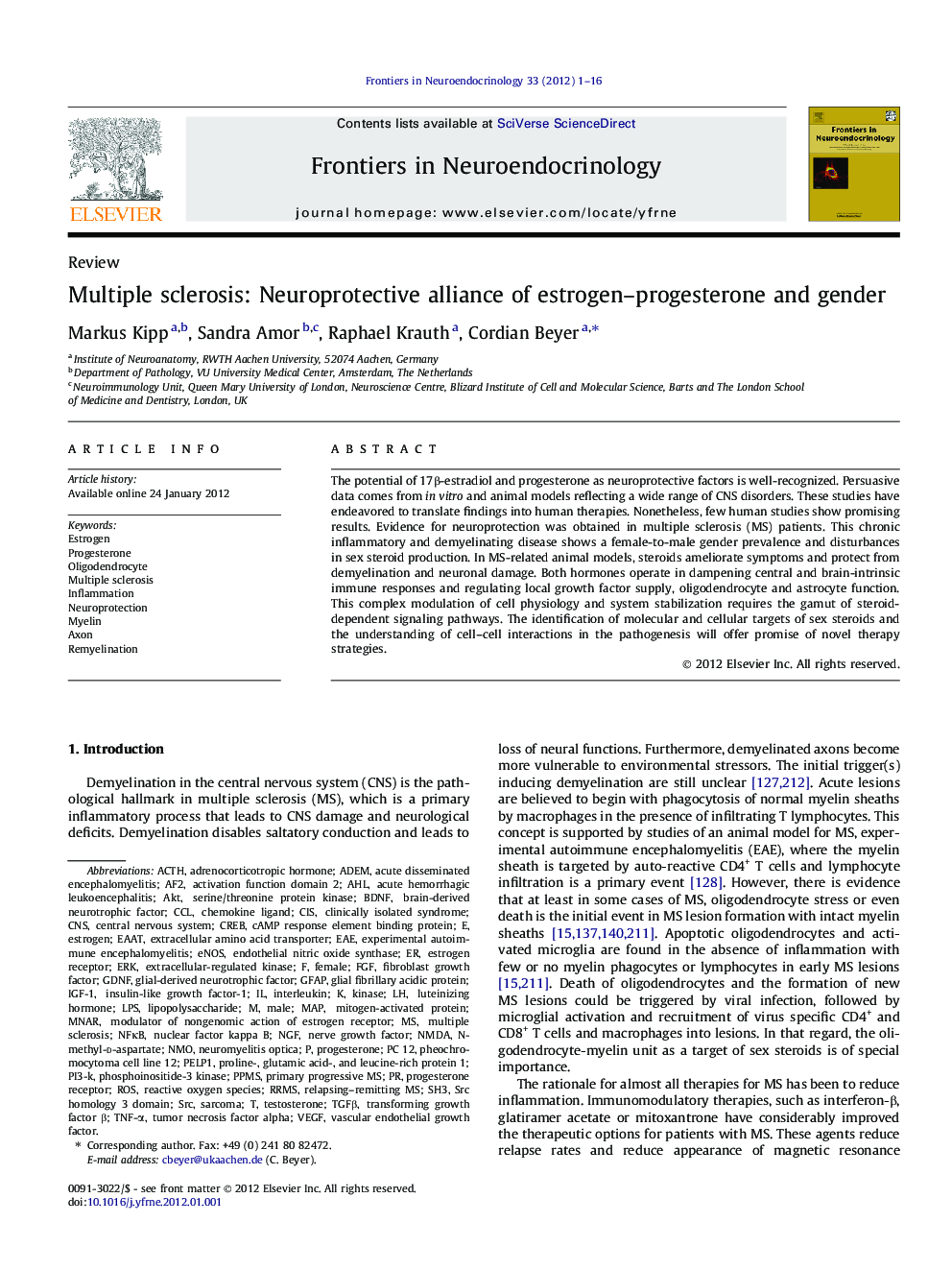| Article ID | Journal | Published Year | Pages | File Type |
|---|---|---|---|---|
| 5900705 | Frontiers in Neuroendocrinology | 2012 | 16 Pages |
The potential of 17β-estradiol and progesterone as neuroprotective factors is well-recognized. Persuasive data comes from in vitro and animal models reflecting a wide range of CNS disorders. These studies have endeavored to translate findings into human therapies. Nonetheless, few human studies show promising results. Evidence for neuroprotection was obtained in multiple sclerosis (MS) patients. This chronic inflammatory and demyelinating disease shows a female-to-male gender prevalence and disturbances in sex steroid production. In MS-related animal models, steroids ameliorate symptoms and protect from demyelination and neuronal damage. Both hormones operate in dampening central and brain-intrinsic immune responses and regulating local growth factor supply, oligodendrocyte and astrocyte function. This complex modulation of cell physiology and system stabilization requires the gamut of steroid-dependent signaling pathways. The identification of molecular and cellular targets of sex steroids and the understanding of cell-cell interactions in the pathogenesis will offer promise of novel therapy strategies.
⺠Sex steroids are neuroprotective in the brain disease models. ⺠Multiple sclerosis (MS) reveals gender and sex steroid-related aspects. ⺠Estrogen and progesterone dampen local and peripheral inflammatory aspects of MS. ⺠Both steroids additionally stimulate oligodendrocyte function and remyelination.
